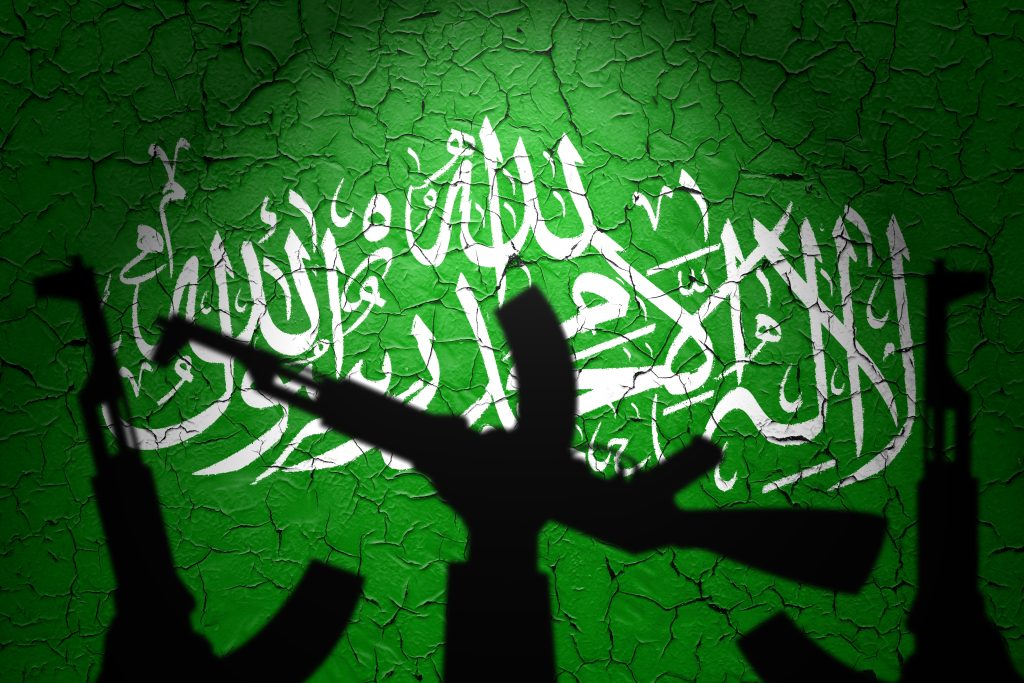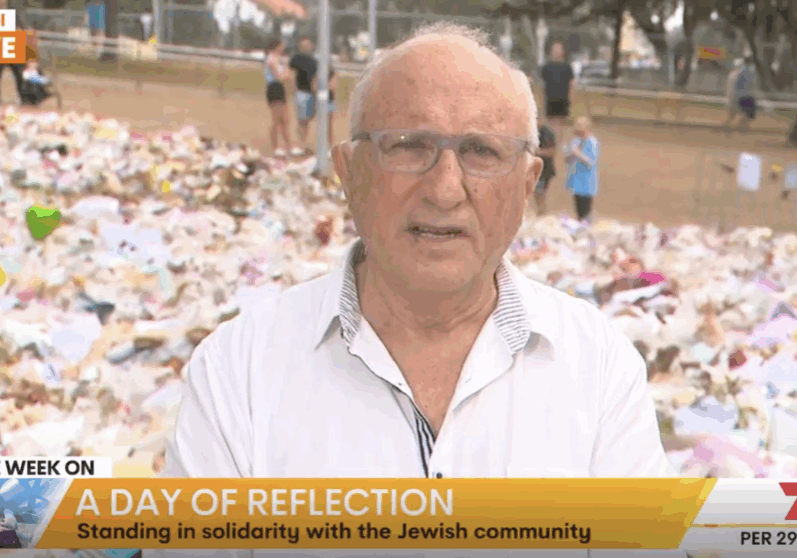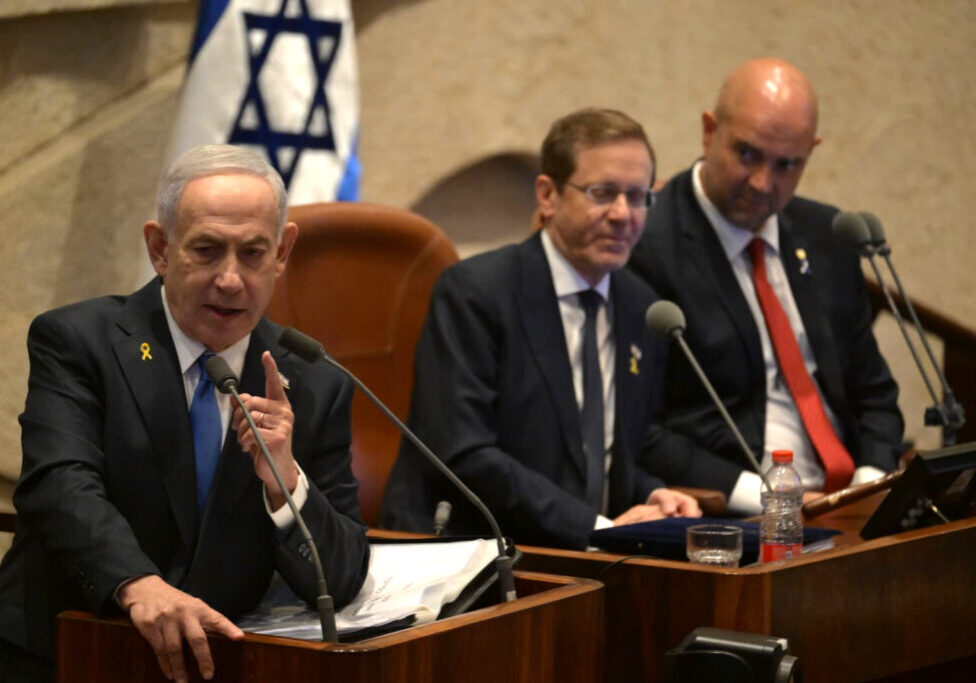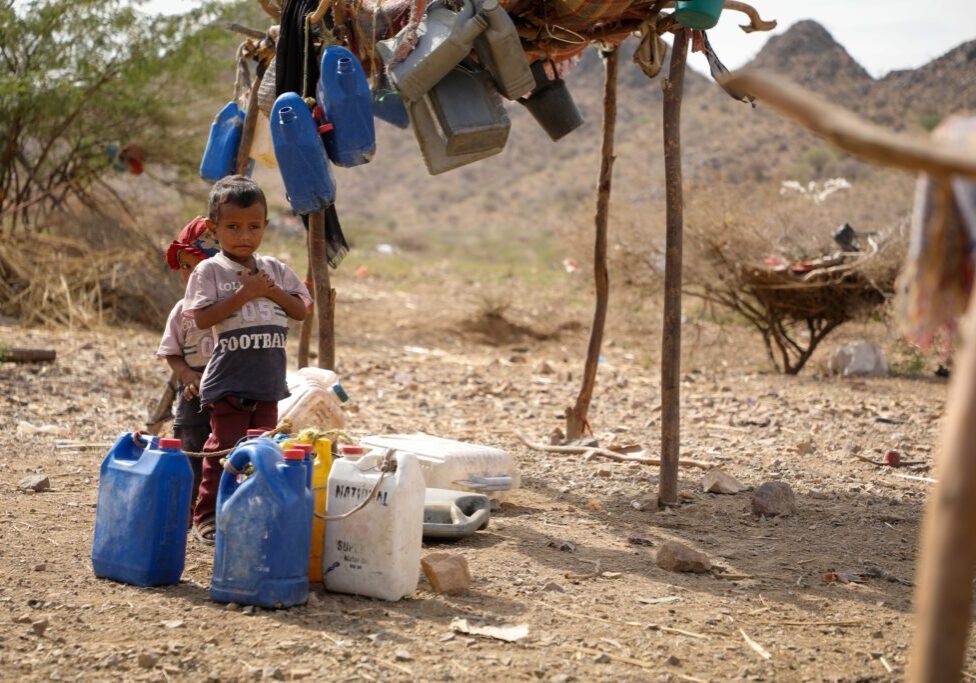FRESH AIR
Hamas is the cause, not the effect, of Israeli policies
December 22, 2023 | Oved Lobel

An effect cannot precede its cause.
This basic logical principle seems to evade most anti-Israel activists and others who wish to ‘contextualise’ Hamas’ October 7 pogrom as an inevitable reaction to Israeli policies. Of course, chronological, ideological and historical context are very important in understanding Hamas and October 7, and unfortunately for those anti-Israel advocates, this context tells precisely the opposite story of their preferred – and false – narrative.
Hamas is the cause, not the effect, of the policies they decry, and October 7 has no relation to settlements in the West Bank, the blockade of Gaza or any other Israeli policy. To deny this is to deny history and ignore Hamas’ description of itself and its ideology and motives. Hamas has always been quite clear about what it is, why it exists and what it wants.
It is only Hamas’ highly ideological supporters in the West – who ironically reject the importance of ideology – who pretend Israeli policies or actions, rather than Israel’s existence per se, are relevant.
In this case, nuance serves only to obfuscate. There is no room in Hamas’ own narrative and self-conception for Israeli policies or actions to matter.
Hamas’ ideology and goals
Hamas’ apocalyptic, antisemitic and genocidal 1988 Founding Charter – a blend of Soviet, Nazi and Islamist antisemitism, religious sayings, fabricated quotes and historical anecdotes and a range of conspiracy theories, including those derived from the infamous fabrication The Protocols of the Elders of Zion – makes its goals and nature clear.
Hamas’ cause – a global war against Jews comprising part of a global Islamic imperial war of conquest to reclaim all lands originally conquered and colonised by Muslims since the 7th century CE – can be summed up using quotes from the Charter:
- Hamas’ official slogan, in Article 8 of the Charter: “Allah is its target, the Prophet is its model, the Koran its constitution: Jihad (Holy War) is its path and death for the sake of Allah is the loftiest of its wishes.”
- Hamas defines itself not just as a local Palestinian movement, but a “universal” Islamic one, tracing itself “back to the time of the birth of the Islamic message [7th century].”
- Regarding fighting ‘the Jews’, Hamas considers itself “one of the links in the chain” dating back to the Muslim Brotherhood insurgent Izz al-Din al-Qassam, killed in 1935 by the British and after whom Hamas’ military wing is named. 1935 long predates the establishment of Israel in 1948.
- Hamas consists of “every Moslem” – not just Palestinian – “who embraces its faith, ideology, follows its programme.”
- Hamas’ location is “anywhere that there are Moslems who embrace Islam as their way of life everywhere in the globe.” The organisation asserts, “Whoever takes Islam as his way of life, be it an organization, a grouping, a country or any other body, [Hamas] considers itself as their soldiers.”
- All of Mandatory Palestine is an “Islamic Waqf (endowment) throughout the generations and until the Day of Resurrection, no one can renounce it or part of it, or abandon it or part of it… similar to all lands conquered by Islam by force, and made thereby Waqf lands upon their conquest, for all generations of Muslims.”
- “The Palestinian problem is a religious problem, and should be dealt with on this basis,” and, “The day that enemies usurp part of Moslem land, Jihad becomes the individual duty of every Moslem. In face of the Jews’ usurpation of Palestine, it is compulsory that the banner of Jihad be raised.”
- “Initiatives, and so-called peaceful solutions and international conferences, are in contradiction to the principles of [Hamas]… There is no solution for the Palestinian question except through Jihad.”
- “Jews” and “Zionists” – words used interchangeably by Hamas throughout the Charter – are a cosmic evil who have taken over or are trying to take over the world and are responsible for every war in history, including the French and Bolshevik Revolutions, and must be destroyed to bring about the Muslim Day of Judgement. Article 7 of the Charter includes the infamous Islamic proverb:
[Hamas] aspires to the realisation of Allah’s promise, no matter how long that should take. The Prophet, Allah bless him and grant him salvation, has said: “The Day of Judgement will not come about until Moslems fight the Jews (killing the Jews), when the Jew will hide behind stones and trees. The stones and trees will say O Moslems, O Abdulla, there is a Jew behind me, come and kill him.”
- “Israel, by virtue of its being Jewish and of having a Jewish population, defies Islam and the Muslims.” Hamas “regards itself the spearhead” in a global Arab and Islamic war against “world Zionism” – that is, Jews – and exhorts other Arab and Islamic countries and organisations to act more strongly against the Jewish “merchants of war”. Hamas introduces its Charter by saying, “Our struggle against the Jews is very great and very serious… [Hamas] is but one squadron that should be supported by more and more squadrons from this vast Arab and Islamic world, until the enemy is vanquished and Allah’s victory is realised.”
- The Jews, according to Hamas, are only the latest invaders of so-called Muslim land following the Crusaders and Mongols and will be defeated just like them.
We therefore have the necessary and sufficient explanation for October 7 and all Hamas activity to date: The Jews are invaders and the ultimate global evil and must be fought by every Muslim to bring about Judgement Day and restore all land colonised by Muslims since the 7th century.
Despite a token paragraph on nationalism and another on the “vicious, Nazi-like” Israeli response to the First Intifada, it’s quite clear Hamas is not nationalist in the way Westerners understand the term, but rather part of a broader Islamic whole. As will be detailed below, what would become Hamas was actually founded long before the First Intifada and grew out of a regional, rather than local, context.
Notably, Hamas does not mention the occupation of the West Bank and Gaza in its Charter.
Even the political ploy in 2017 to sanitise Hamas’ antisemitism via a “Document of General Principles and Policies” – which did not supersede the original Charter, as Hamas leader Mahmoud al-Zahar emphasised as early as 2006 when he said the group “will not change a single word in its covenant” – stresses that Hamas’ goal is the destruction of Israel via terrorism. The Document of General Principles and Policies also fails to mention Gaza or the West Bank.
Hamas’ historical and ideological context
Hamas needs to be situated in its historical context as an outgrowth of the success of the Islamic Revolution in Iran in 1979, which galvanised the transnational Muslim Brotherhood to violent regional revolution and spawned a host of jihadist offshoots. Hamas, as its Charter emphasises, was established as merely “one of the wings of Moslem Brotherhood in Palestine.” Its Charter opens with quotes from Muslim Brotherhood founder Hassan al-Banna and former Muslim Brotherhood leader in Iraq Amjad al-Zahawi.
Antisemitism has always been the fulcrum of the Muslim Brotherhood’s worldview, expressed as early as 1951 by its primary ideologue Sayyid Qutb in an essay titled Our Struggle With the Jews, which is essentially a prototype of the 1988 Charter.
Historian and political scientist Matthias Küntzel has documented the close relations between the Nazis and the founder of the Muslim Brotherhood Hassan al-Banna in Egypt up to the start of World War II. Throughout the 1930s, the Nazis bankrolled the Brotherhood’s propaganda via the German embassy in Cairo and the Deutsches Nachrichtenbüro (DNB), the official Nazi press agency controlled by Joseph Goebbels, payments seemingly coordinated by the infamous Grand Mufti Hajj Amin al-Husseini and his agents.
Citing a report he discovered in 2016 in the British National Archives, Küntzel further notes that “Nazi agents attended conferences of the Muslim Brotherhood, that German officials held ‘Palestine meetings’ with the Brotherhood and that they also discussed the issue directly with Hassan al-Banna.”
Additionally, the local Nazi party branch in Cairo would invite Brotherhood members to their lectures on “the Jewish question”. The deputy branch chairman wrote, in the context of providing explosives and facilitating bombings in then Mandatory Palestine, that “we have been asked to assist regularly at the meetings of the Muslim Brethren.”
In his book Semites and anti-Semites, which documents the wholesale adoption of Christian and then Nazi and Soviet antisemitism by the Arab and Islamic world, historian Bernard Lewis discusses articles published by the Muslim Brotherhood in Egypt in its newspaper al-Dawa in 1979, including in the children’s supplement, about its war against the Jews. Lewis summarises these articles as follows:
Unlike the Christians, Jews are all bad, and there are no good Jews. The Jews are genetically and ontologically evil, and the writers of these articles are not concerned with the distinctions made by spokesmen writing in Western languages, between Zionists and Israelis on the one hand and those who profess the Jewish religion on the other. The enemy is simply the Jew, in whatever disguise he appears.
It is an incredible irony that Islamic fundamentalists believe they are fighting Western influence given that a core facet of their entire belief system – the European variety of antisemitism – is of purely Western origin and mostly derived from the Nazis and Communists less than a century ago.
While the Muslim Brotherhood had always had a revolutionary and insurrectionist “Secret Apparatus” since its founding in 1928, the early 1980s and 1990s saw a qualitatively more revolutionary strain emerge as a result of Ayatollah Khomeini’s victory in Iran, culminating in the assassination of Egyptian President Anwar Sadat in 1981; the full Islamisation of Pakistan and Sudan; the abortive takeover of Hama in Syria in 1982; and the transnational Arab jihad in Afghanistan. It was followed by a further Islamic wave in the 1990s that saw the rise of the Taliban and Al-Qaeda, Saddam Hussein’s Islamisation of Iraq and the general Islamisation of the PLO’s rhetoric.
It was around 1982-1983, when the Islamic Revolutionary Guard Corps’ (IRGC) “Hezbollah” branch was first making itself known in Lebanon, that the group that would become Hamas first began procuring weapons and explosives and planning terrorist actions, having spent the decade or two since 1967 laying the ideological and social groundwork among the Palestinian population for a broad jihad, as documented by terrorism expert Matthew Levitt.
Hamas is a core part of this pan-Islamic regional and global jihad from the 1980s-1990s that was turbocharged and in large measure overseen by Iran’s imperial Islamic Revolution. One can glimpse this identification with global jihad in Hamas’ attitude towards Al-Qaeda.
In 2006, Abdel Aziz Dweik, Hamas’ speaker of the Palestinian Legislative Council and, according to the organisation, the real Palestinian president, told reporter David Remnick, “Bin Laden is a fighter for the cause of Islam… We respect him. Hiding this fact does not serve the truth.”
In 2011, after Bin Laden’s assassination, Hamas leader Ismail Haniyeh said, “We condemn the assassination and the killing of an Arab holy warrior. We ask God to offer him mercy with the true believers and the martyrs.”
In the mid-1990s, the name of Hamas’ military in the West Bank, as Thomas Hegghammer writes in The Caravan: Abdallah Azzam and the Rise of the Global Jihad, was the Martyr Abdullah Azzam Brigades. Azzam was the leader overseeing the Arab component of the jihad in Afghanistan against the Soviets. Hegghammer also notes Azzam is celebrated by Hamas in such a way that “suggests that Azzam is considered among the three or four most prominent martyrs in the Hamas movement’s history.” There are even admittedly dubious reports cited by Hegghammer, including from Azzam’s wife, that he either wrote or edited the Hamas Charter.
Whatever its precise relationship with the Muslim Brotherhood today, Hamas has long since been subsumed under Iran’s “Axis of Resistance” war against Israel’s existence and is thus still part of a transnational and supranational whole. According to Ronen Bergman, it was the IRGC and its Hezbollah branch that first trained Hamas operatives, in Lebanon, in the construction and use of car bombs and other explosive devices in the early 1990s, including the organisation’s most infamous bomb-maker, Yahya Ayyash.
Backwards chronology
What would eventually become Hamas was established by the early 1980s, when there was no security fence or checkpoints around Gaza or the West Bank, and Palestinians essentially had complete freedom of movement between the territories and across Israel. This remained true after Hamas officially announced itself in 1988. Thus, even ignoring its own Charter, which is quite explicit in calling for the destruction of Israel regardless of Israeli actions, it’s clear that chronologically Hamas could not be reacting to the blockade or anything else Israel has done.
Hamas’ response to Israel dismantling all its settlements and withdrawing all of its citizens and military forces from Gaza in 2005 was to immediately begin firing rockets and mortars at Israeli cities and building tunnels under the border that were eventually used to ambush Israeli soldiers and kidnap Gilad Shalit in 2006, sparking the first Israeli ground operation since withdrawal. In response, Israel imposed temporary and partial blockades after 2005.
When Hamas violently seized control of Gaza in June 2007, it was unoccupied territory. An indefinite blockade was then imposed by Egypt and Israel after Hamas’ takeover because the group made quite clear what it was and what it would do in both word and deed. This included its rejection of the Quartet – the UN, US, EU and Russia – conditions for diplomatic recognition and continuing aid: that it renounce terrorism, recognise Israel and honour the agreements the Palestinian Authority had signed with Israel.
Once again, cause and effect have been confused. Hamas could not have been responding to the blockade, because the blockade was only imposed as a response to Hamas’ actions and inexorable dedication to its genocidal doctrine.
In the 1990s, Hamas became an arm of the IRGC’s multifront jihad against Israel and murdered Israelis precisely to try to stop Israel from entering into any agreements with the Palestinian Authority or normalising relations with Arab States, which could result in the evolution of a Palestinian state based in Gaza and the West Bank alongside Israel and thus the end of the occupation in the West Bank. It therefore cannot be said that Hamas is fighting against the occupation as Westerners use the word.
Defining “Occupation” and “Resistance”
- “Resistance”: a euphemism for proactive terrorism and violence
- “Occupation”: As used by Hamas and most Arabs and Muslims, this is a euphemism for the existence of a Jewish State and the presence of Jews anywhere in what was once Mandatory Palestine. This term has no relation to the West Bank.
Thus, when Hamas or its supporters and sympathisers talk about ‘resisting’ the ‘occupation’, it is an attempt to reframe its long-term goal of proactive, genocidal violence against Jews as a legitimate response to victimhood. The phrase “resistance is justified when Palestine is occupied” actually means that terrorism, mass murder and barbarism are justified as long as there are any Jews in former Mandatory Palestine.
What is being ‘resisted’ – that is, violently attacked – are Jewish civilians and Israel’s very existence, not any Israeli policies.
Hamas: a manifestation of the oldest surviving Imperialism and Colonialism
With the fall of the Persian empire in the 7th century to Arab conquest and the final subjugation of the Roman empire by the Turks in the 15th, Islamic imperialism is the oldest extant form of empire and colonialism today, and it is as part of that revanchist movement that Hamas explicitly defines itself. Far from being an anti-colonial or liberation movement, Hamas is quite emphatic that it is an irredentist Muslim imperial army. And part of that imperial restoration entails destroying the Jews who have returned to their homeland.
In pursuit of this goal, Hamas conducted the October 7 pogrom and created the conditions for a devastating Israeli response that would inevitably cause widespread destruction in Gaza, something Hamas leaders have dismissed as a necessary price to pay in pursuit of jihad against Israel. Everything Hamas officials said and did before October 7 and after, including calling the attack “Al-Aqsa Flood” – linking it to Islamic holy sites in Jerusalem – demonstrates that they view themselves as engaged in a cosmically significant religious war, not a national liberation battle. As such, they will continue to strive to repeat the ‘success’ of the October 7 massacre, as they have openly said, in the name of restoring an Islamic colonial empire unless and until they are destroyed, which just happens to be “the loftiest of [their] wishes.”
RELATED ARTICLES

The Government’s actions still fall short: Joel Burnie on FDD Morning Brief

“The writing was on the wall for a number of years”: Colin Rubenstein on Channel 7 Weekend Sunrise





















